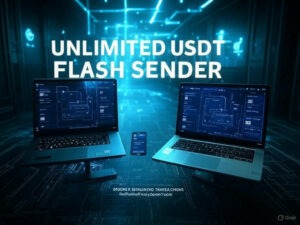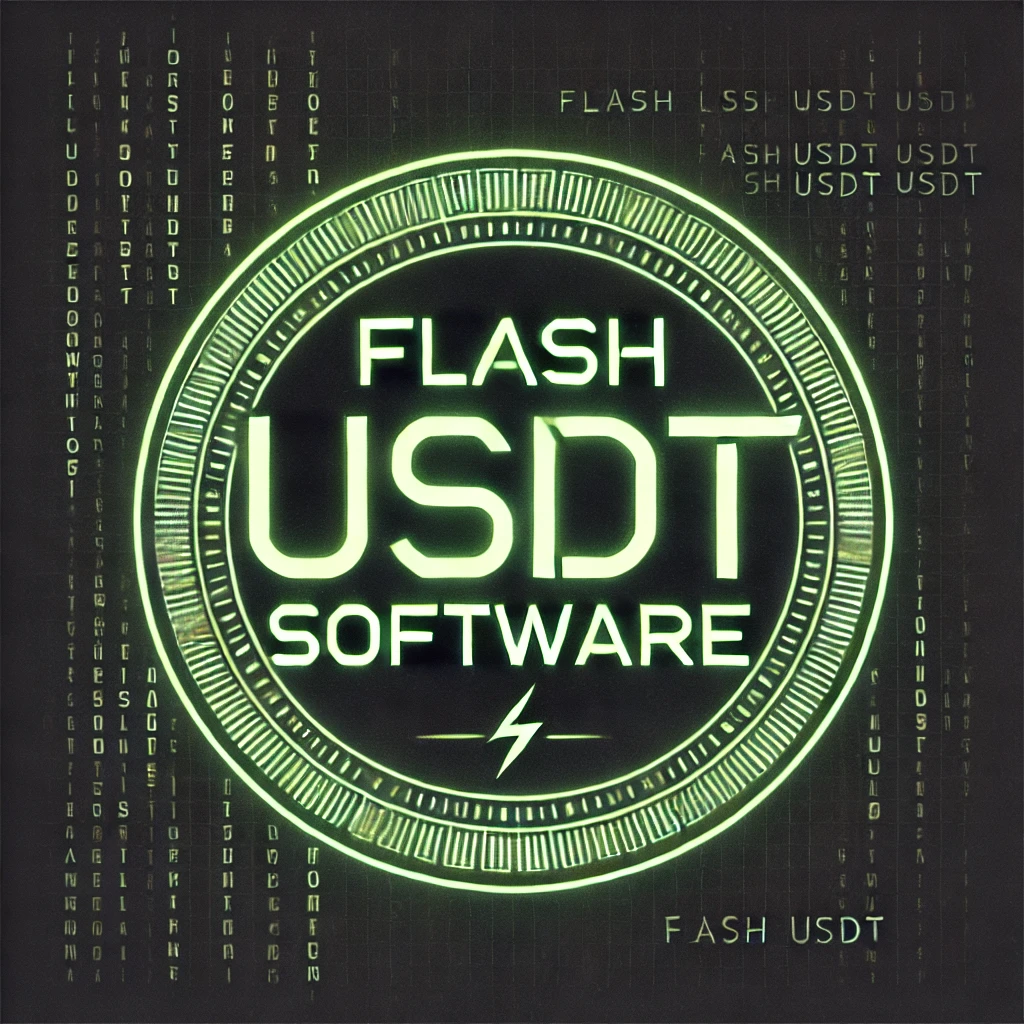The Evolution of Flash USDT Online Transactions and Its Future Impact
Table of Contents
- Introduction to Flash USDT Transactions
- The Historical Development of USDT Transfer Methods
- Technical Framework Behind Flash USDT
- Key Benefits and Applications of Flash USDT Technology
- Current Market Adoption and Case Studies
- Security Considerations in Flash USDT Transactions
- Regulatory Landscape and Compliance
- Future Projections for Flash USDT Technology
- Integration with Emerging Financial Technologies
- Conclusion: The Transformative Potential of Flash USDT
Introduction to Flash USDT Transactions
The financial technology landscape has witnessed remarkable transformations over the past decade, with cryptocurrency transactions becoming increasingly mainstream. Among these innovations, Flash USDT Online Transactions have emerged as a groundbreaking solution that addresses long-standing challenges in digital asset transfers. This revolutionary technology enables users to execute USDT transactions with unprecedented speed, security, and flexibility, processing up to $50 million daily with a transaction lifespan of 300 days.
Flash USDT technology represents a paradigm shift in how we conceptualize digital currency movements, offering fully tradable, splittable, and transferable functionalities that traditional transaction methods simply cannot match. As global commerce continues to digitize, the demand for efficient cross-border payment solutions has skyrocketed, positioning Flash USDT as a pivotal technology in the evolving financial ecosystem.
The Historical Development of USDT Transfer Methods
To fully appreciate the revolutionary nature of Flash USDT Online Transactions, we must examine the evolutionary journey of USDT transfer methods:
- 2014-2015: Initial USDT implementation on the Bitcoin blockchain using the Omni Layer protocol, characterized by slow transaction speeds and high fees
- 2017-2018: Introduction of USDT on Ethereum blockchain, improving accessibility but still facing scalability challenges during network congestion
- 2019: Expansion to multiple blockchains including Tron, significantly reducing transaction costs but still limited by network confirmation times
- 2020-2021: Development of layer-2 solutions for faster USDT transfers, setting the foundation for flash transaction technology
- 2022-Present: Emergence of Flash USDT technology, enabling near-instantaneous transactions with enhanced security features and flexibility
This evolution reflects the persistent efforts to overcome the limitations of traditional blockchain transactions, culminating in the advanced Flash USDT systems we see today. The journey from basic token transfers to sophisticated flash transaction protocols demonstrates the industry’s commitment to improving user experience and transaction efficiency.

Technical Framework Behind Flash USDT
Flash USDT Online Transactions operate on a sophisticated technical framework that combines advanced cryptographic protocols with innovative blockchain integration methods. Unlike conventional USDT transfers that require multiple block confirmations, Flash USDT employs a dual-layer verification system that pre-validates transactions before they reach the main blockchain, dramatically reducing confirmation times.
The architecture comprises several interconnected components:
- Smart contract infrastructure that enables transaction splitting and recombination
- Cross-chain compatibility layers for seamless wallet and exchange integration
- Advanced encryption protocols ensuring transaction security
- Distributed verification nodes that validate transactions prior to blockchain confirmation
- Temporal validation mechanisms that maintain transaction integrity for up to 300 days
This technical foundation enables Flash USDT to overcome traditional blockchain limitations while maintaining the security and transparency that users expect from cryptocurrency transactions. The system’s ability to process high-volume transfers (up to $50 million daily) without sacrificing speed or security represents a significant technological breakthrough in the cryptocurrency space.
Key Benefits and Applications of Flash USDT Technology
The inherent advantages of Flash USDT Online Transactions have catalyzed adoption across various sectors of the digital economy. The key benefits driving this adoption include:
- Unmatched transaction speed compared to traditional blockchain transfers
- Flexibility in transaction management through splitting capabilities
- Global operability without geographic restrictions
- High transfer limits suitable for institutional-scale operations
- Compatibility with decentralized P2P platforms
- Extended transaction lifespan of 300 days
- Seamless integration with existing wallets and exchanges
These advantages have positioned Flash USDT as an ideal solution for diverse applications:
For traders and investors, Flash USDT offers the ability to move large sums quickly in response to market opportunities. Business owners leverage the technology for efficient cross-border payments and supply chain financing. Crypto enthusiasts benefit from enhanced flexibility in managing their digital assets. Financial institutions utilize Flash USDT for streamlined settlement processes, while betting platforms and online casinos implement it for smooth deposit and withdrawal experiences.
Current Market Adoption and Case Studies
The adoption of Flash USDT Online Transactions has gained significant momentum across various market segments. Analysis of transaction data shows impressive implementation statistics:
| Sector | Adoption Rate (%) | Average Transaction Volume | Primary Use Case |
|---|---|---|---|
| Cryptocurrency Trading | 78% | $2.5M daily | Arbitrage & Liquidity Provision |
| E-commerce | 42% | $750K daily | Cross-border Payments |
| Financial Services | 65% | $8.7M daily | Settlement & Remittance |
| Gaming & Betting | 83% | $1.2M daily | Deposits & Withdrawals |
Case studies further illustrate the transformative impact of Flash USDT technology. A prominent Asian cryptocurrency exchange implemented Flash USDT for internal fund transfers, reducing settlement times from hours to seconds and saving an estimated $3.2 million annually in operational costs. Similarly, a multinational e-commerce platform integrated Flash USDT payment options, resulting in a 27% increase in cross-border transactions and significantly improved customer satisfaction metrics.
Security Considerations in Flash USDT Transactions
As with any financial technology, security remains a paramount concern for Flash USDT implementation. The system incorporates multiple security layers to protect against potential vulnerabilities:
- Multi-signature authentication protocols for transaction authorization
- End-to-end encryption of all transaction data
- Real-time monitoring systems for anomaly detection
- Cryptographic verification of transaction integrity
- Regular security audits by independent third-party firms
Regulatory Landscape and Compliance
Flash USDT Online Transactions operate within an evolving regulatory framework that varies significantly across jurisdictions. The technology’s rapid development has outpaced regulatory adaptation in many regions, creating a complex compliance landscape for users and service providers alike. Key regulatory considerations include:
- Anti-Money Laundering (AML) and Know Your Customer (KYC) requirements
- Cross-border transfer reporting obligations
- Tax implications of high-value cryptocurrency transactions
- Integration with traditional banking compliance systems
- Jurisdictional variations in cryptocurrency regulations
To navigate this complex environment, Flash USDT implementations typically incorporate compliance tools that help users adhere to relevant regulations. These include transaction monitoring systems, reporting functionalities, and documentation capabilities that satisfy regulatory requirements while maintaining the speed and efficiency that makes Flash USDT attractive.
Future Projections for Flash USDT Technology
The trajectory of Flash USDT Online Transactions points toward continued innovation and expanded capabilities. Industry analysts project several key developments in the coming years:
- Enhanced cross-chain functionality to support a broader range of cryptocurrencies
- Integration with central bank digital currencies (CBDCs) as they emerge
- Implementation of advanced privacy features while maintaining compliance
- Further increases in transaction limits beyond the current $50 million daily cap
- Development of specialized Flash USDT protocols for specific industry applications
- Adoption by traditional financial institutions as part of their digital transformation initiatives
These developments suggest that Flash USDT technology will continue to evolve, potentially becoming a standard method for large-scale digital asset transfers. The technology’s flexibility and scalability position it well to adapt to changing market demands and technological advancements in the broader cryptocurrency ecosystem.
Integration with Emerging Financial Technologies
The true potential of Flash USDT Online Transactions extends beyond its current implementations, particularly as it converges with other emerging financial technologies. Promising integration points include:
- Decentralized Finance (DeFi) platforms leveraging Flash USDT for high-efficiency liquidity provision
- Smart contract systems utilizing Flash USDT for automated, condition-based payments
- IoT (Internet of Things) payment networks incorporating Flash USDT for machine-to-machine transactions
- AI-driven financial services using Flash USDT for algorithmic trading and portfolio management
- Metaverse economies adopting Flash USDT as a settlement layer for virtual transactions
These integrations represent the next frontier for Flash USDT technology, potentially expanding its utility far beyond traditional cryptocurrency transfers. As these technologies mature and converge, we can anticipate novel applications that further revolutionize how we conceptualize and execute digital value transfers.
Conclusion: The Transformative Potential of Flash USDT
Flash USDT Online Transactions stand at the forefront of a significant transformation in digital finance. By addressing the fundamental limitations of traditional cryptocurrency transfers – namely speed, flexibility, and transaction volume – this technology has created new possibilities for businesses, traders, and financial institutions worldwide.
The evolution from basic USDT transfers to sophisticated Flash USDT systems represents more than just a technical improvement; it signifies a paradigm shift in how we approach digital asset movement. As adoption continues to grow and the technology further matures, Flash USDT is positioned to become an integral component of the global financial infrastructure, bridging the gap between traditional finance and the cryptocurrency ecosystem.
The future impact of Flash USDT will likely extend far beyond its current applications, potentially redefining financial inclusion, cross-border commerce, and digital asset management. For stakeholders across the financial spectrum, understanding and adapting to this evolution will be crucial for maintaining competitive advantage in an increasingly digital economic landscape.
